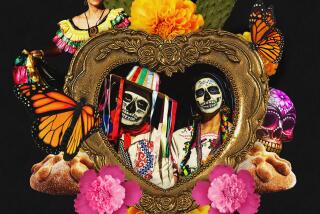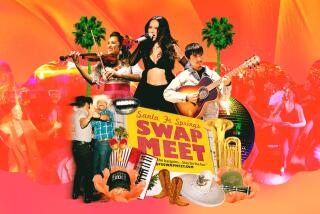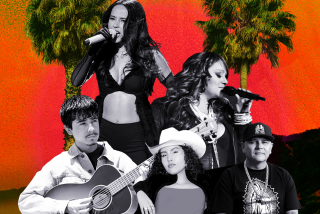Parades March to the Beat of Politics, Family
About 100,000 people gathered on a scorching Sunday afternoon along the streets of East Los Angeles to watch boxing champion Oscar De La Hoya grand-marshal the Mexican Independence Day Parade.
While the theme of the parade was “Olympic Echoes,” much of the focus in this, an election year, seemed squarely on politics. Clinton-Gore campaigners pushed placards stamped with the candidates’ names. Many Latino Los Angeles County elected representatives were present throughout the parade route, smiling and waving from convertibles.
As crowd pleasers go, however, real enthusiasm was reserved for mariachi bands and sex symbols. As the Coors Light Girls passed in two convertibles, the gents whooped and hollered and became positively giddy. Many of the women were already swooning as De La Hoya drove by in a maroon convertible festooned with red, green and white carnations, the colors of the Mexican flag. “He’s great,” said Estefani Torres, 20, sighing.
Another Sunday parade, in the Pico-Union area, celebrated the independence of several Central American countries. More than 1,000 marchers feted the independence of Costa Rica, El Salvador, Guatemala, Honduras and Nicaragua.
The five nations declared their independence from Spain on Sept. 15, 1821, and formed the Central American Federation. Fifteen years later, when the federation collapsed, the five became independent countries.
For many, the parades were a family affair that included some grandparents in wheelchairs--an annual ritual where several generations gather together to revel in cultural pride. At the East L.A. march, the Fernandez clan--25 in all--had four generations at the parade, including family members from Chino, Redlands and Pico Rivera.
Anita Olmos, 78, the oldest of the group and a regular at the parade for 46 years, said that each year, there are fewer floats and more advertisers, giving the parade a more overtly commercial bent. As a red vintage car touting a driving school rolled past, she added: “There are so many Mexican parades in different areas of Southern California now that they take away from this one.” Still, she loved coming, Olmos said as she swayed to the sounds of a mariachi band.
Floats advertised everything from orthopedic medical services to the U.S. Postal Service’s express mail service and various types of hard liquor and beer.
From his stroller, 2-year-old Aaron Lujan seemed mesmerized by the Disney tribute to the “Hunchback of Notre Dame” and, later, a waving Ronald McDonald.
Most people, lined up 10 feet deep or watching from balconies along the 2 1/2-mile parade route, didn’t seem to mind.
The parade celebrates the 186th anniversary of Sept. 16, 1810, when Father Miguel Hidalgo y Costilla called his parishioners to mass in Mexico and rallied them to revolt against nearly three centuries of Spanish colonial rule. Although it took 11 years to defeat Spain, the date is considered the day that an independent Mexico was created.
Organizers of the parade, which this year had 120 entries, including marching bands, folkloric groups and floats, said they expected half a million attendees. Lt. Ron Mills of the Los Angeles County Sheriff’s Department, however, estimated a crowd of about 100,000.
The overwhelming mood of Latino harmony seemed to crack only once, when De La Hoya signed autographs before the parade was to begin. Surrounded by his fans in the street, some began to chant “Cesar Chavez!” alluding to the lightweight boxing hero from Mexico who recently lost a championship bout to De La Hoya.
More to Read
Sign up for Essential California
The most important California stories and recommendations in your inbox every morning.
You may occasionally receive promotional content from the Los Angeles Times.










